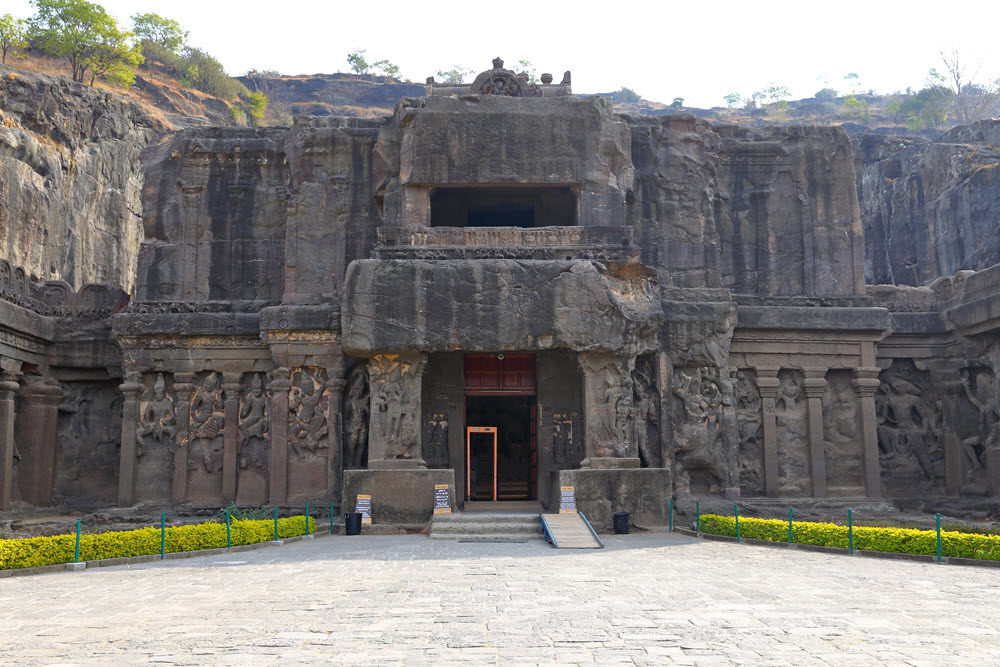If you ask someone which is the most famous building in India, the majority of people will say the Taj Mahal or ‘Crown Palace.’ Located in Agra, made of white marble and built between 1631 and 1653, it was commissioned by the 5th Mughal emperor Shah Jahan as a mausoleum for his favourite wife Mumtaz Mahal. Allegedly, he planned to build a replica from black marble across the river Yamuna facing the Taj Mahal where he would be buried and eternally mourn her, but he died in 1658. His tomb is also located in the Taj Mahal which is the epitome of Mughal Indo-Islamic architecture. It can be reached by car in around two and a half hours from Delhi so if you have limited time, but want to do a day trip to somewhere remarkable, this would be a good choice.
Hindu Temple architecture often has an inner sanctum, the garbhagriha or womb-chamber, where the primary Murti, or the image of a deity, is housed. On the exterior, the garbhagriha is crowned by a tower-like shikhara. The Akshardham and Bhairon Mandir Temples are examples of Hindu Temple architecture and are not to be missed whilst in Delhi.
Indo-Saracenic architecture was a style mostly used by British architects in India in the later 19th century. It was used especially for public and government buildings in the British Raj as well as for the palaces of rulers of the princely states. It utilised Gothic revival and Neo-Classical styles with specific Indian features added. A good example of Indo-Saracenic architecture in Delhi would be the Secretariat Building which houses the important ministries of the Government of India.
However, for me, perhaps the most incredible examples of Indian architecture are the rock cut structures. Many of these are temples, where all the rooms, statues and motifs are cut out of solid rock. Some of the most remarkable are the temples of the Ellora caves in the Aurangabad district of Maharashtra, pictured below, which are literally carved out of a cliff wall.
Whilst you won’t find any rock cut temples in Delhi, there are several step wells or Baolis there including the Rajon ki Baoli and Gandhak ki Baoli. These are also ancient architectural feats of wonder which are worth visiting.

The ISHRS 31st World Congress is going to be memorable for its Indian cultural offerings, but I hope it will also be remembered for the amount of audience participation that will feature as part of the general sessions. There will be 6 panel discussions titled ‘Let’s Talk About:’
- Finasteride and dutasteride
- Holding solutions and adjuncts to surgery
- Understanding the advantages of the FUT strip donor harvesting method
- When to say ‘no’ to surgery
- Repairing bad surgery
- Regenerative medicine
There are also going to be 6 audience response sessions where questions will be asked on a wide range of subjects using the conference app polling feature. This will allow for the immediate determination of depth of understanding, gaps in knowledge, common practice, areas of consensus, and subjects where there is a lack of agreement. Last year’s program chair Dr. Sara Wasserbauer will be hosting a hair trivia game so you can learn whilst having fun!
Come and build your knowledge!
All the best,
Gregory Williams, MBBS, FISHRS
2023 Program Chair